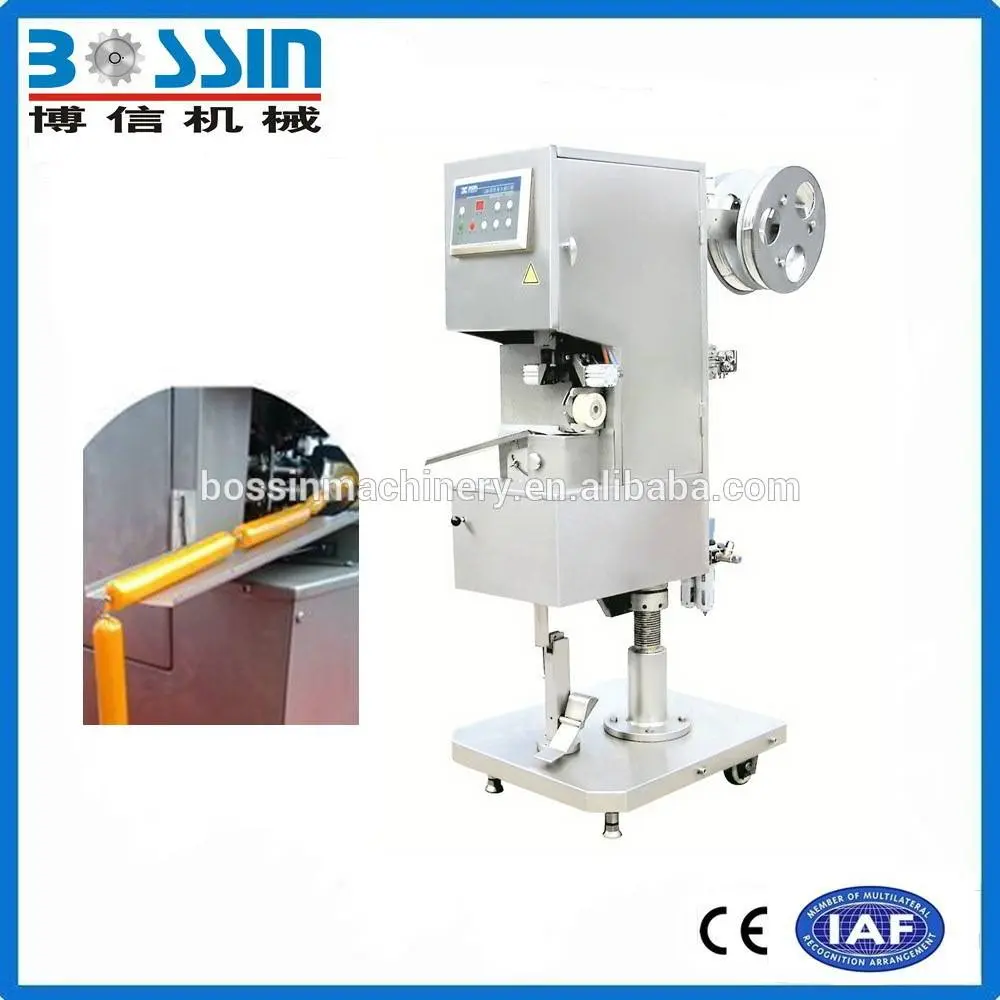
Desemba . 07, 2024 08:18 Back to list
sausage binding machine
The Evolution and Significance of Sausage Binding Machines
In the realm of food processing, efficiency and precision are paramount, particularly in the production of meat products like sausages. Sausage binding machines play a crucial role in this industry, revolutionizing the way sausages are manufactured. This article delves into the history, technology, and importance of sausage binding machines in modern food production.
A Brief Historical Overview
Sausage making dates back thousands of years, with its origins traced to ancient civilizations. Initially, the process was labor-intensive and required skilled artisans to ensure the quality and uniformity of the product. With the Industrial Revolution came advancements in machinery, which laid the groundwork for modern food processing methods. The introduction of sausage binding machines in the late 19th and early 20th centuries was a turning point for the industry, enhancing production capabilities and standardizing the size and shape of sausages.
Understanding Sausage Binding Machines
Sausage binding machines are specialized equipment designed to automate the process of filling casings with meat mixtures, tying them off, and preparing them for cooking or packaging. These machines are essential in large scale production settings where maintaining consistency and quality is crucial.
The basic operation of a sausage binding machine involves a few key components a hopper to hold the sausage mixture, a filling tube to extrude the mixture into casings, and a tying mechanism to secure the ends of each sausage. Modern machines often utilize advanced technology, featuring programmable settings that allow operators to control the length, diameter, and weight of each sausage precisely.
The Technological Advancements
In recent years, technological innovations have significantly enhanced the functionality of sausage binding machines. Features such as automatic casing feed systems, digital controls, and integrated quality control mechanisms have become commonplace. These advancements not only improve efficiency but also reduce waste, ensuring that resources are utilized optimally.
Moreover, some machines are designed to handle various types of casings, from natural to synthetic, accommodating diverse culinary preferences and market demands. This flexibility allows manufacturers to cater to a broad audience while maintaining the highest standards of hygiene and safety.
sausage binding machine

The Importance of Sausage Binding Machines in the Industry
The role of sausage binding machines in the food processing industry cannot be overstated. Firstly, they contribute to the overall efficiency of production lines. By automating the sausage filling and tying processes, manufacturers can significantly increase output, meeting the ever-growing consumer demand for processed meat products.
Quality control is another vital advantage of these machines. With consistent operation, manufacturers can ensure that each sausage is uniform in size and weight, which is essential for customer satisfaction and brand reputation. Additionally, by minimizing manual handling, these machines reduce the risk of contamination, enhancing food safety.
Furthermore, the implementation of sausage binding machines supports labor efficiency. The food processing industry often faces labor shortages and high turnover rates. By utilizing machines, companies can reduce their reliance on skilled labor for repetitive tasks, allowing workers to focus on more complex and value-added activities.
Sustainable Practices and the Future of Sausage Binding Machines
As the global food industry places an increasing emphasis on sustainability, sausage binding machines are evolving to meet these demands. Manufacturers are now designing machines that are energy-efficient, require less water during operation, and generate minimal waste. Additionally, some newer models incorporate features that allow for easier cleaning and maintenance, promoting hygiene and reducing downtime.
The future of sausage binding machines looks promising, with ongoing research and development paving the way for even more innovative solutions. Integration with smart technology and the Internet of Things (IoT) is likely to revolutionize monitoring and control processes, leading to smarter production lines that can adapt in real-time to operational demands and market trends.
Conclusion
Sausage binding machines represent a significant advancement in food processing technology, embodying a blend of tradition and innovation. They have transformed the sausage production landscape, enhancing efficiency, quality, and food safety. As we look to the future, the continuous evolution of these machines will undoubtedly play a key role in shaping the industry, contributing to a more sustainable and responsive food production system. Whether you’re enjoying a classic hot dog at a summer barbecue or a gourmet sausage at a fine dining restaurant, you can appreciate the intricate processes that sausage binding machines have facilitated throughout history.
Latest news
-
Linking Gearbox & Holding Device with GPT-4-Turbo AI
NewsAug.01,2025
-
Pneumatic Clipping Machine - Shijiazhuang Bossin Machinery | Precision Clipping, Automated Sausage Production
NewsAug.01,2025
-
Ultimate Vacuum Filler: AI-Powered Sealing Efficiency
NewsJul.31,2025
-
Pneumatic Clipping Machine - Shijiazhuang Bossin Machinery Equipment Co., Ltd.
NewsJul.31,2025
-
Pneumatic Clipping Machine-Shijiazhuang Bossin Machinery|Automated Sausage Clipping&Modular Design
NewsJul.31,2025
-
Pneumatic Clipping Machine - Shijiazhuang Bossin Machinery Equipment Co., Ltd.|Sausage Production Line,OEM Support
NewsJul.31,2025